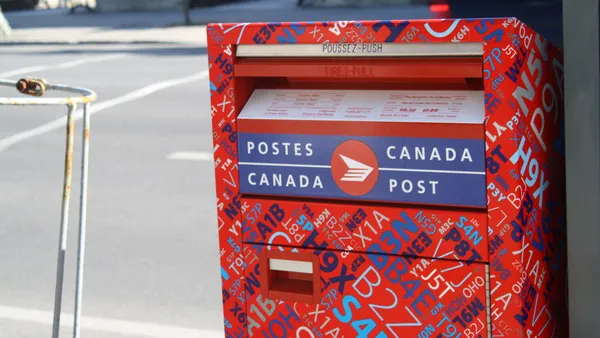Dive Brief:
- Tit-for-tat tariffs between China and the U.S. are shaking up seafood supply chains, as customers in China seek new markets to avoid higher prices for U.S. goods, Reuters reports.
- U.S. lobster exports to China faced a 25% tariff as of July. The result was a shift in the product's sourcing networks: China began to buy more lobster from Canada — so much, Eastern Canadian airports added cargo flights to accommodate the demand.
- Chinese seafood exporters are being hit by the trade war, too. Imports of frozen salmon, for example, faced a 10% tariff as of Sept. 24. Reuters reports the product's price has jumped 20% in dollar value, as stockpiles gathered prior to September begin to run low.
Dive Insight:
On the coast of Massachusetts we often speak about The Perfect Storm, the climate conditions that created the 1991 massive storm that claimed the sword fisher Andrea Gail and pushed George Clooney and Mark Wahlberg further towards stardom in the epic film of the same name.
Today, our fisherman are the victims of climate change, economics, and politics, yet another perfect storm.
Let's focus on the lobster supply chain as an example of this perfect storm. With cod stocks reduced by a combination of climate change and chronic over fishing, many fisherman have converted over to fishing for lobster, one ocean crop currently in abundance. Record catches in northeastern Massachusetts brings good and bad news. A robust fishery has provided a strong economic boost for fishermen and shore side businesses.
But many of the lobsters that are paying the bills are really transient … just passing through. Warming waters in the mid-Atlantic region and southern New England are forcing those lobsters to head north for colder waters. Those that are not being harvested are heading for Maine and Canada, two areas also experiencing a boom in landings. For now, anyway.
Enter politics and economics. One of the huge markets for New England lobster is in China, where lobster is used as the centerpiece for many holidays and festivals. But the trade war with China has created significantly higher prices in China for American lobster essentially killing that export market. Without the China market there is a glut of lobsters, forcing prices down and lobster processors looking for new markets.
Well, except for Canada. Lobsters sold to China from Canada are not part of the trade war and business is booming. United States based lobster processors are shipping lobster to Canada, but at lower margins. This has added pressure along the entire domestic supply chain, but puts Canada in a strong position. Lobsters are heading north by land and sea to a country not fighting a trade war.
Those leaf-peeping tourists in New England this fall might well be enjoying lobster in one of the many roadside lobster pounds, thanks to the economic, environmental, and political storm raging just beyond the horizon.













